FOR AGES 7 YEARS TO 11 YEARS
Although grid method is fairly simple once you get to grips with it, it can be a bit of a challenge on first sight, so we've written a handy guide to get you through.
This step-by-step breakdown shows how to use the grid method to solve a variety of multiplication problems your children are likely to encounter in school. This might be simple money questions in Year Three all the way up to multiplying 4-digit numbers in Year Six.
The grid method of multiplication, also known as the box method, is a way of doing long multiplication by breaking numbers down into place values and writing them out in a grid. A school usually starts introducing the multiplication grid method in maths at the start of Key Stage 2, when children go into Year Three, although some introduce it as early as Year Two.
Using the grid method to do long multiplication gets children to break the numbers down into hundreds, tens and ones before multiplying them. This helps the child to understand what each digit in a number represents and what's actually happening to the numbers when they are multiplied. This helps children who are struggling by letting them visualise the process more easily.
In this article, we will walk you through solving various types of multiplication problems using grid method.
The problem: 23x15 = ?
The first number, 23, is made up of the number 20 and the number 3. That means we need to write 20 and 3 in the boxes to the right of the X.
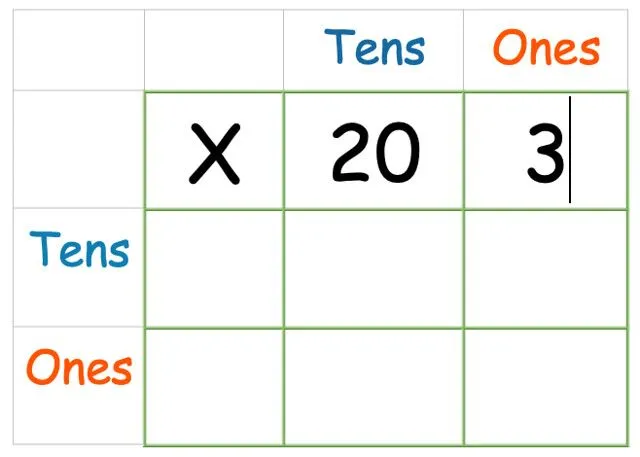
Next, add the other number down the side:
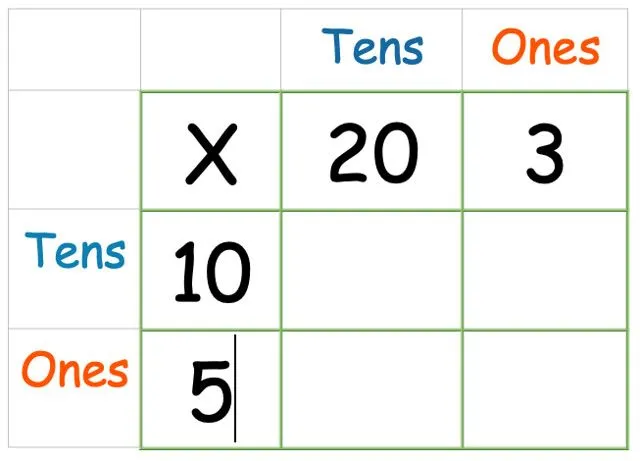
Now, we do the actual multiplication. It doesn't really matter what order you multiply the boxes in, but we suggest starting on the right because it makes it easier for children to adjust to column method later.
Multiply the ones column by the tens row:
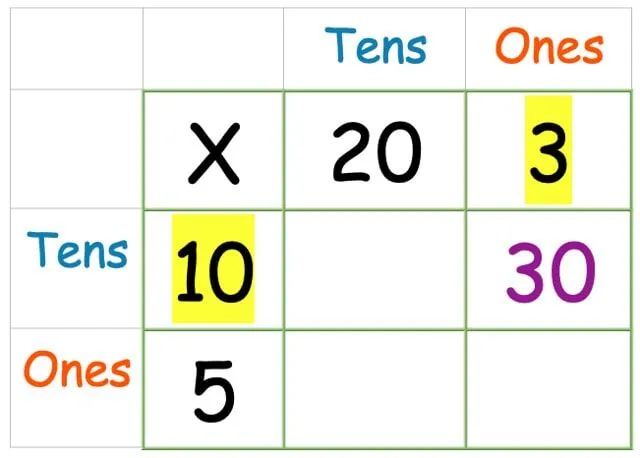
Now do the tens times the tens:

Now the ones times the ones:
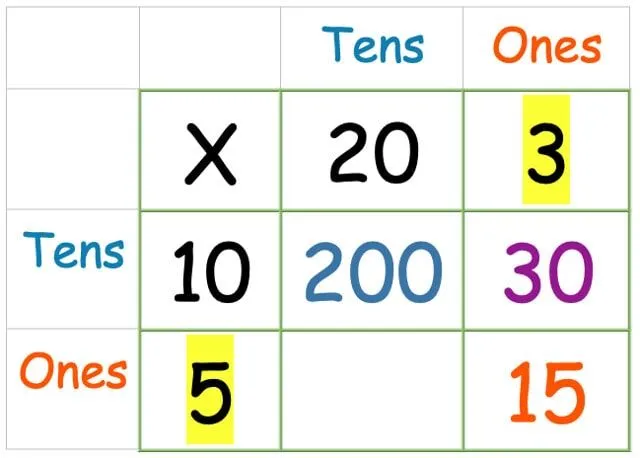
And finally, the tens row times the ones column:
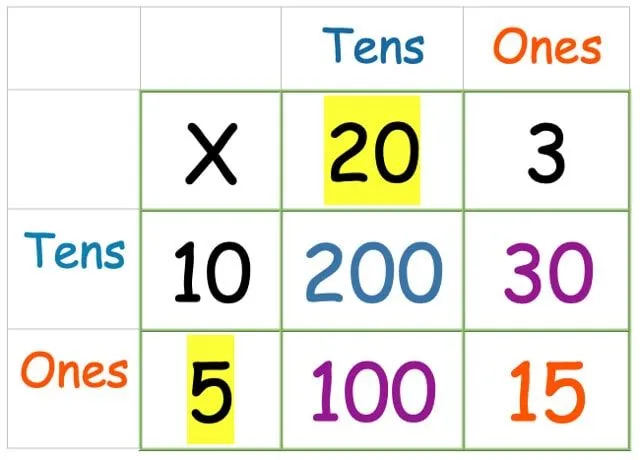
Now, we just need to add all the numbers together. Take all four of the answers you have just found, and write them out as a column addition (or whichever addition method the child you are helping is most comfortable with):
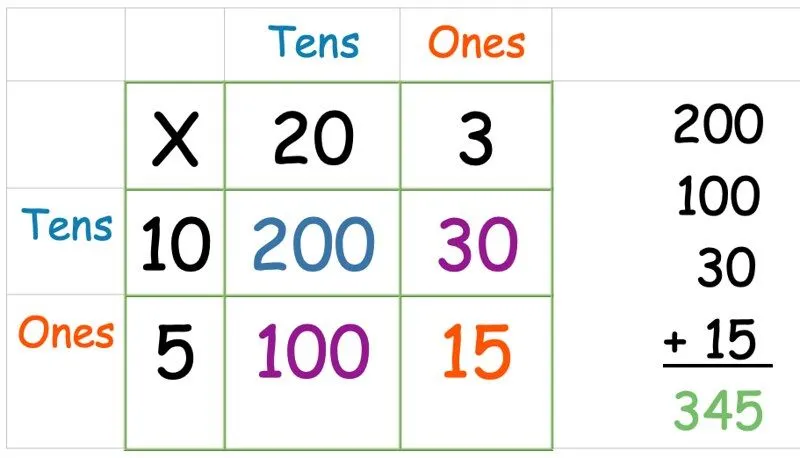

In some ways, this is even easier than the grid method example above with a 2-digit number, since using a 1-digit number means there's only one row to deal with. We just need an extra column in for the hundreds. Then, follow the same method as above, multiplying each number in the top row by the one in the left-hand column:
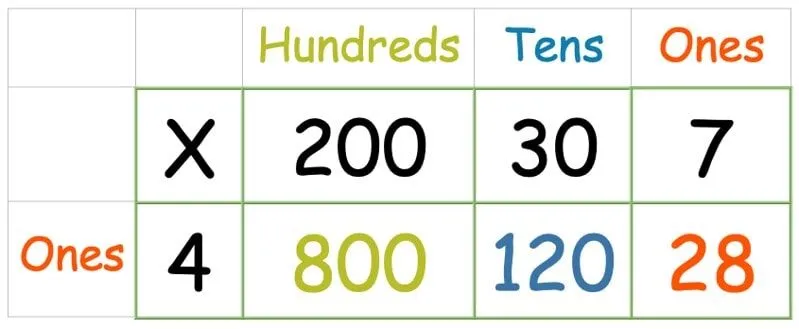
Once all the numbers have been multiplied, write out a column addition to find the sum of all three.
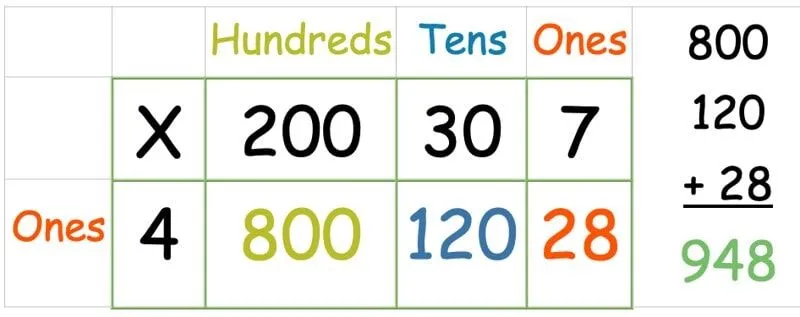
Sorted!
In Year 6, children will have to use the maths grid to multiply a three- or four-digit number by a two-digit one.
Put the numbers into the grid as before:
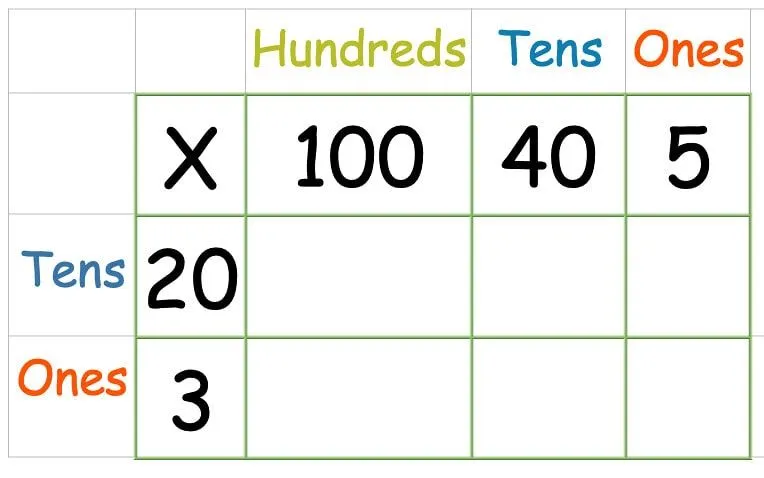
Next, multiply the top row:
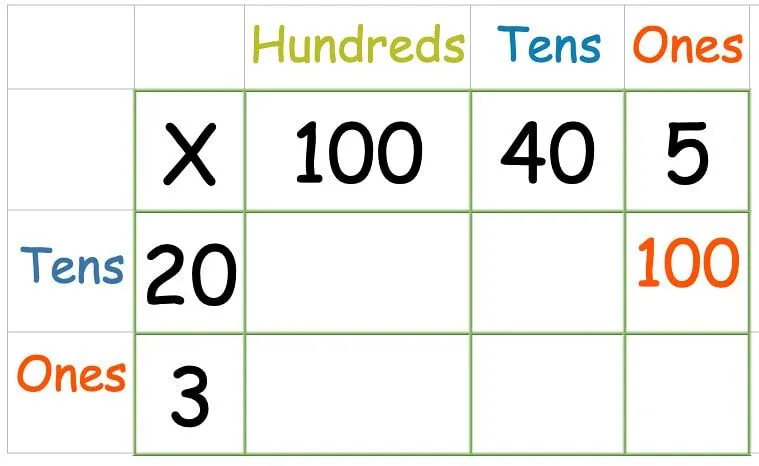
Once you've multiplied all the numbers in the top row, it's time for the second row:
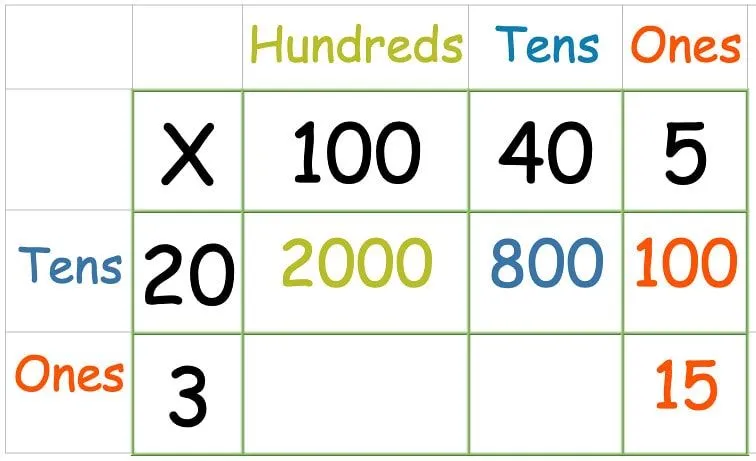
Some less confident children might find adding so many numbers at once intimidating, so it's fine to do this step in two parts.
First, add up the total of each row. Then, add the two answers together:
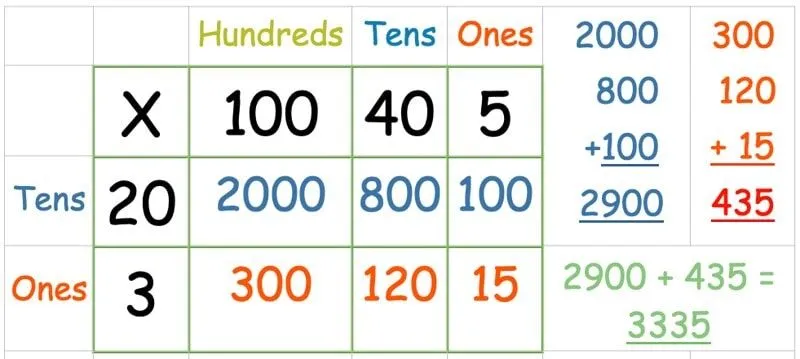
Many children get intimidated at the thought of working with decimals. The good part about grid method is that it really isn't much different to using it without the decimal.
In the following example, we're working out 12.5 x 2.2.
Put the numbers into the grid as usual. This time we have a column called "tenths" for the decimal place.
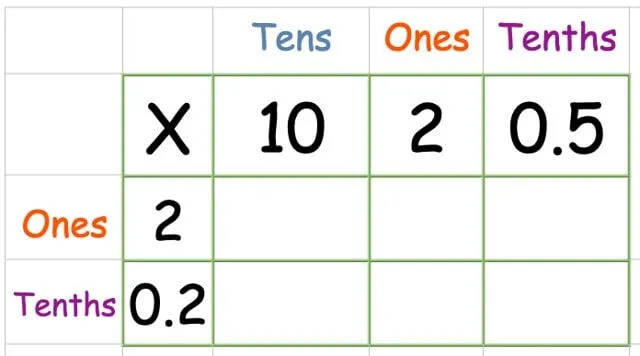
Multiply the top row:
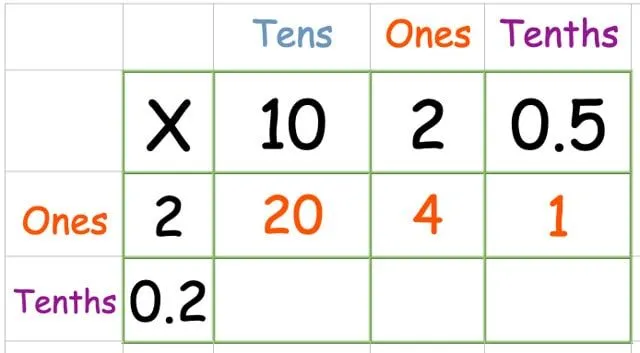
Multiply the bottom row:
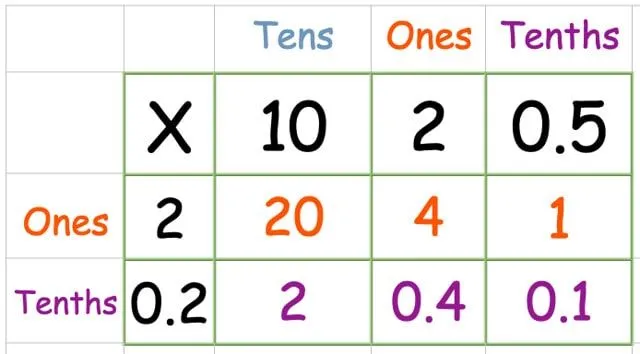
Find the total of the answers:
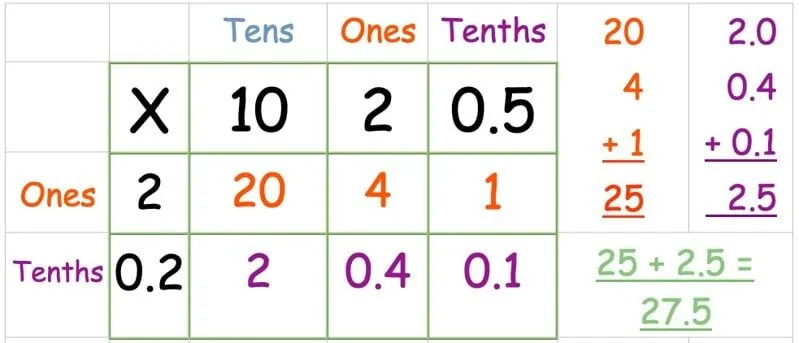
As long as you're clear about whether you're working in pounds or pence, multiplying money using the grid method is very similar to any other multiplication in grid method.
Here is an example of a question your child may come across in Year 4:
Anna buys two packs of muffins from the bakery. Each pack costs £1.25. How much did she pay altogether?
Once your child has worked out that they need to multiply £1.25 by two, put the numbers into the grid as usual.
Most children won't have covered decimal multiplication in Lower KS2, so convert the numbers to pence before you start. Then, work through the grid as if you were multiplying a three-digit number by a one-digit number.
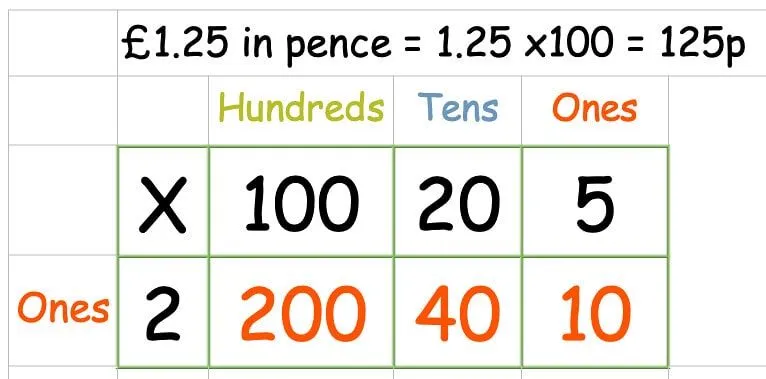
Finally, find the total as usual, then convert back to pence at the end:
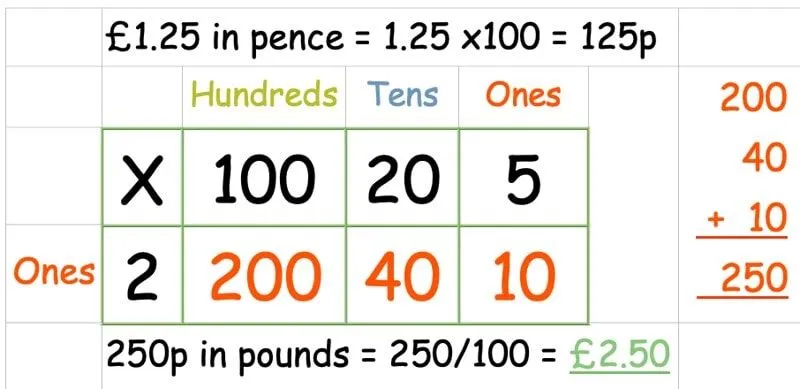
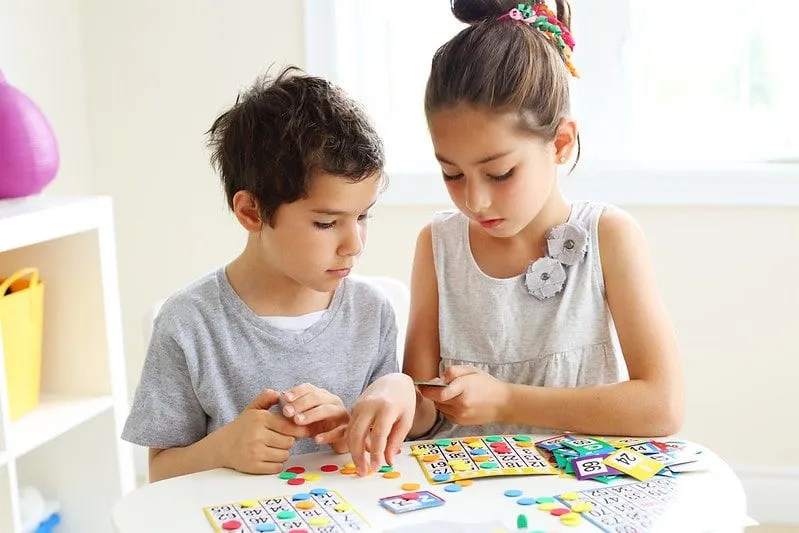
If your child is struggling with the grid method despite your best efforts, here are our top three suggestions to help.
1) Times tables knowledge. Make sure your child's times tables knowledge is solid. Often, children who struggle with long multiplication understand the method - they just don't have instant recall of their times' tables facts, so while they know they need to multiply 3 by 12, they don't know 3 x 12 = 36. Practice is key - get them repeating their tables in the car, while they help with washing up, or any other time they can.
2) Addition struggles. If your child handles the grid well but gets the wrong answer at the end, they may need a quick refresher on column addition, or to break the addition down into smaller steps.
3) Confidence. Especially for children who have struggled with maths in the past, it's easy to lose confidence. The grid method can look intimidating at first, and some children get so nervous they simply stop being able to work through the steps logically. Reassurance will do wonders here, as will working through a couple of examples together slowly.
If you've tried all these and your child is still finding grid method difficult, check-in with their teacher, especially if you've noticed them struggling in school more generally.
Read The Disclaimer
At Kidadl we pride ourselves on offering families original ideas to make the most of time spent together at home or out and about, wherever you are in the world. We strive to recommend the very best things that are suggested by our community and are things we would do ourselves - our aim is to be the trusted friend to parents.
We try our very best, but cannot guarantee perfection. We will always aim to give you accurate information at the date of publication - however, information does change, so it’s important you do your own research, double-check and make the decision that is right for your family.
Kidadl provides inspiration to entertain and educate your children. We recognise that not all activities and ideas are appropriate and suitable for all children and families or in all circumstances. Our recommended activities are based on age but these are a guide. We recommend that these ideas are used as inspiration, that ideas are undertaken with appropriate adult supervision, and that each adult uses their own discretion and knowledge of their children to consider the safety and suitability.
Kidadl cannot accept liability for the execution of these ideas, and parental supervision is advised at all times, as safety is paramount. Anyone using the information provided by Kidadl does so at their own risk and we can not accept liability if things go wrong.
Kidadl is independent and to make our service free to you the reader we are supported by advertising.
We hope you love our recommendations for products and services! What we suggest is selected independently by the Kidadl team. If you purchase using the buy now button we may earn a small commission. This does not influence our choices. Please note: prices are correct and items are available at the time the article was published.
Kidadl has a number of affiliate partners that we work with including Amazon. Please note that Kidadl is a participant in the Amazon Services LLC Associates Program, an affiliate advertising program designed to provide a means for sites to earn advertising fees by advertising and linking to amazon.
We also link to other websites, but are not responsible for their content.
Was this article helpful?
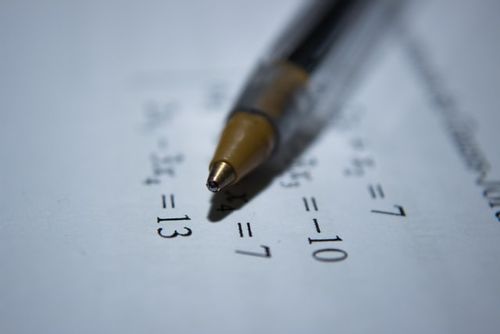


Browse Category

We’ll send you tons of inspiration to help you find a hidden gem in your local area or plan a big day out.



Check your inbox for your latest news from us. You have subscribed to:
Remember that you can always manage your preferences or unsubscribe through the link at the foot of each newsletter.